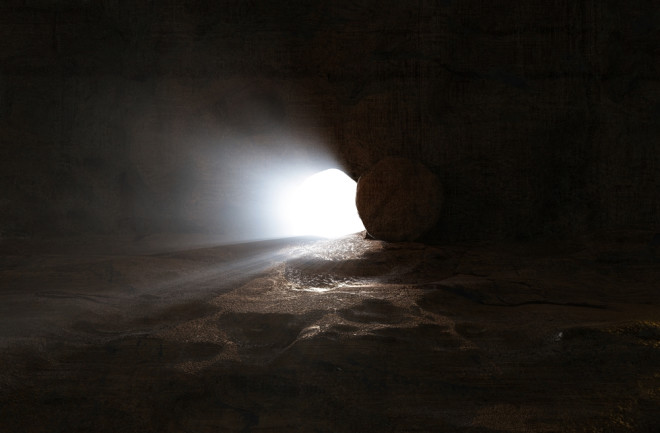A sophisticated “muographic” scan of a well-trod Ancient Greek necropolis, a network of tombs, revealed a puzzling new area that could be a cramped burial chamber. But the researchers can’t confirm as no passage or stairway leads to the strange area.
Hidden under a busy area of Naples, Italy, the necropolis features beautiful fresco paintings and other monuments installed by wealthy Hellenic families between 600 and 200 B.C. At this time, the Greek city of Neapolis (“new city”) thrived above ground and built many buildings and an aqueduct system.
While most of these remain buried under present-day Naples, some surviving and modern-day structures remain connected to the old tombs, through World War II-era bomb shelters and water cisterns built in the 1500s.
Read More: 52-Foot Long Ancient Egyptian Papyrus Discovered
Peering Through Solid Objects with Muography
To prepare for the sophisticated muographic scan, the researchers from Italy and Japan reviewed a more conventional laser scan of the tombs prepared by an Italian cultural heritage program. This had ferreted out all the special inlets to the necropolis (such as the cisterns), but the lasers missed the sealed off area because they were unable to pierce stone walls.
Finding that required a different type of scanning, such as x-ray imaging, but the range of that is too short. The researchers ended up using muography, a technique that dates back to the 1950s. It relies on special particles called muons created when cosmic rays collide with particles called nucleons in the upper atmosphere.
This produces, as the paper says, “a perpetual muon rain” that varies by only about 5 percent over time. While muons fall steadily, they fall few and far between, meaning scans can take weeks on end.
A Month-Long Muographic Scan
In this case, the researchers climbed down to a low, centrally placed chamber known as “Chianca,” a place used for ham aging during the 1800s. Here, about 18 meters below street level, they setup two muon detectors, which looked like small tables.
Inside the surfaces of the tables sat detector plates filled with gel and silver bromide crystals that would, over time, react with the muons and build up a muographic negative of the above tombs. The researchers let them sit for 28 days in 2018 and then sent them off for processing in Naples and Japan.
Puzzling Over a Secret Room
While most of the results confirmed those of the existing 3D scan, they also revealed a strange area midway up the necropolis that matched “no known structure” and was fuzzier and less defined than the other rooms. This one, while about the size of a spacious living room, was up to 3 meters in height and sat about 8.5 meters below the surface.
The anomaly wasn’t a “shadow” effect caused by a building overhead, the researchers concluded, and it wasn’t a cellar, pipeline or unusual layer of soil.
“The size of these discrepancies cannot explain the observed anomaly,” the paper says.
The researchers concluded that the mystery area was some type of burial chamber partially filled with alluvial material, meaning sand or some other substance deposited by water.
Both archaeologists and geologists have used muography over the years to penetrate massive objects, including volcanoes, the Great Pyramids of Giza and glacier bedrocks.

